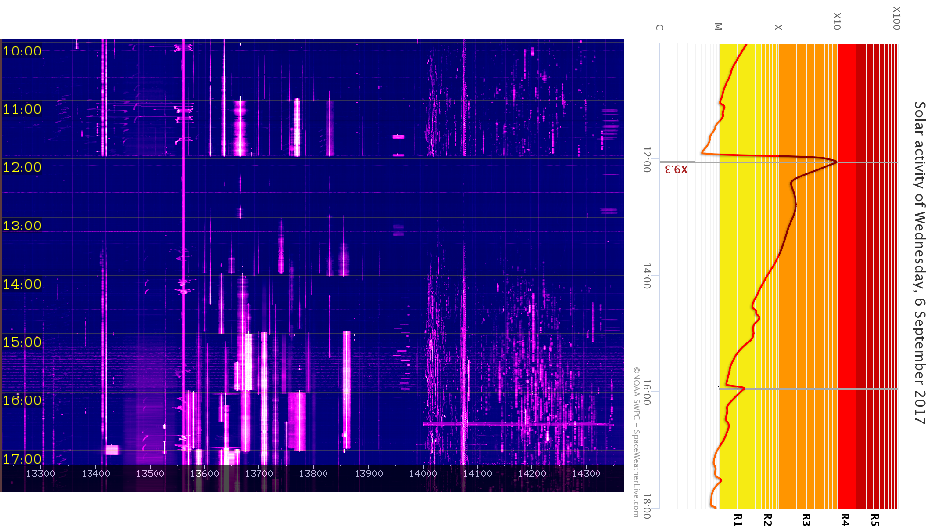Solar flare on September 6, 2017
Pieter-Tjerk de Boer, PA3FWM web@pa3fwm.nl(This is an adapted version of part of an article I wrote for the Dutch amateur radio magazine Electron, January 2018.)
On September 6, 2017, around 12:00 UTC there was a major flare on the
sun, the largest in over 12 years. As a consequence, the HF bands were
unusable for hours, the so-called Mögel-Dellinger-effect. This is caused
by a temporary extra strong ionization of the D layer, causing this to
strongly attenuate the radio signals, so they can no longer reach the
E or F layer to be reflected.

The effect was very visible on the Twente WebSDR, see the figure. This is a waterfalldiagram of about 8 hours between 13.25 and 14.35 MHz, although the effect was visible in the entire HF range. We see the broadcast band around 13.5 MHz and of course the 20 m amateur band.
Just before 12:00 all signals suddenly disappear, and they gradually return over the next few hours. (Note that broadcast transmitters are often switched on and off at the top of the hour, so sudden disapearances of signals in that part of the band are not necessarily caused by the ionosphere.) The only exception is the signal on 13.56 MHz: this is an ISM frequency, so this is probably something local.
To the right of the waterfall display, I've put a graph of solar activity from https://www.spaceweatherlive.com/en/archive/2017/09/06/xray for the same time interval: they clearly match.
The complete 24 hour, 0 - 29 MHz picture can be seen at http://websdr.ewi.utwente.nl:8901/fullday/?date=20170906.
Text and pictures on this page are copyright 2017, P.T. de Boer, web@pa3fwm.nl , except for the spaceweather solar activity graph.
Republication is only allowed with my explicit permission.